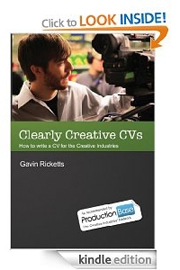Ivan, a lighting cameraman based in London, bought my book and followed my advice. When he sent his new cameraman CV to me for a check-up, he’d followed lots of my advice, but there was still room for improvement. Over the next few posts I’ll take some examples of how I helped him shape his CV to work harder for him.
Formatting a Cameraman CV
While Ivan has worked hard on his formatting, one key thing that wasn’t working was his headers. Words like ‘Personal Profile’ and ‘Experience’ weren’t large enough compared with the rest of the copy. This meant there was no contrast between the heading and the content. The copy merged into one, and it wasn’t clear at a scan where each section was.
Towards the end of the CV, he’d merged the line of copy into the heading line so it read “References; Erik Moore…” Again, this meant at a scan I couldn’t distinguish which bits of the CV were which.
This is a major fault. When you’re hiring and you’re having a first read through the submitted CVs , it’s like browsing magazines at the newsagent. You just scan the cover quickly, looking to see if there’s something that stands out for you. Unless the headlines grab you, you move on to the next title. After he changed the font size and colour, and separated it from the body copy, the CV was much clearer to scan. The read could find the relevant sections easily. The producer is more likely to find the information that will make her add Ivan to the interview list.
 If you want to make more money this year, get Clearly Creative CVs. This book helps TV and Film crew write better CVs. Sometimes it’s cheaper on Amazon, but if you buy it direct, I’ll gladly give you feedback when you’ve finished your new cameraman CV.
If you want to make more money this year, get Clearly Creative CVs. This book helps TV and Film crew write better CVs. Sometimes it’s cheaper on Amazon, but if you buy it direct, I’ll gladly give you feedback when you’ve finished your new cameraman CV.
You can also take the content as an online course, which has templates and cheat sheets.
